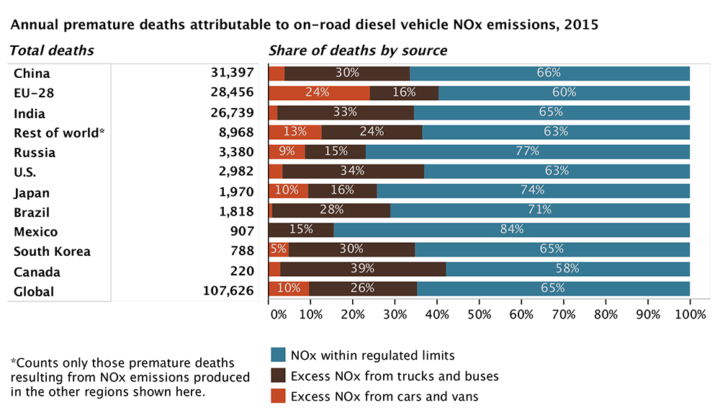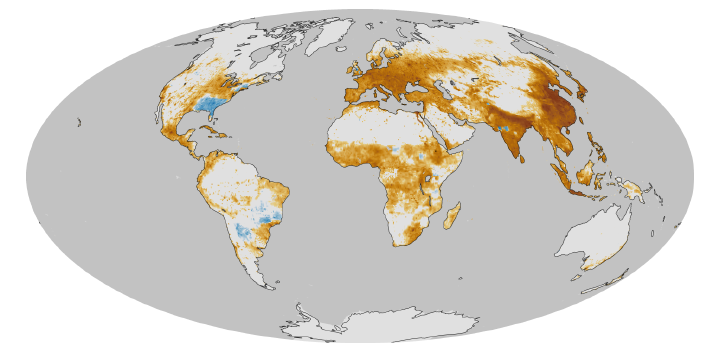


Figure by the ICCT based on data from Anenberg et al. 2017.
It is no secret that many diesel cars and trucks emit more pollution under real-world driving conditions than during laboratory certification testing. Many lab tests, for instance, are run with perfectly maintained vehicles on flat surfaces in ideal conditions. In the real world, drivers chug up hills or sit in traffic in bad weather in vehicles well past their prime.
Until this month, nobody had tallied the health effects of all the excess diesel air pollution entering the atmosphere through real-world driving conditions. According to a new study published in Nature, vehicles in eleven major markets (Australia, Brazil, Canada, China, Europe, India, Japan, Mexico, Russia, South Korea, and the United States) emitted about 4.6 million more tons of nitrogen oxides (NOx) in 2015 than official laboratory tests suggested they would. NOx contributes to the accumulation of both ground-level ozone (O3) and fine particulate matter (PM2.5) in the atmosphere.
According to the research team, nearly one-third of heavy-duty diesel vehicle emissions and over half of light-duty diesel vehicle emissions are above the certification limits. On average, light-duty diesel vehicles produce 2.3 times more NOx than the limit; heavy-duty diesel vehicles emit more than 1.45 times the limit.
The authors of the study calculated the health effects for current and future levels of this excess diesel NOx by running a global atmospheric chemistry model that simulates the distribution of PM2.5 and O3. The bottom line: excess NOx caused 38,000 premature deaths in 2015. It could cause as many as 183,600 premature deaths by 2040 as the use of diesel increases.
“We estimate that excess diesel NOx emissions from on-road trucks, buses, and cars leads to upwards of 1,100 premature deaths per year in the U.S.,” said Daven Henze, a professor of mechanical engineering at the University of Colorado and member of NASA’s Health and Air Quality Applied Sciences Team.
Other key findings from the study:
For more information, read a press release and fact sheet from the International Council on Clean Transportation, a press release from the University of Colorado, and a press release from the University of York. To find out more about global air pollution trends, read A Clearer View of Hazy Skies from NASA Earth Observatory.

This map, based on previous research, shows a model estimate of the average number of deaths per 1,000 square kilometers (386 square miles) per year due to fine particulate matter (PM2.5), a type of outdoor air pollution. Pollution from diesel exhaust is one contributer to PM2.5. Earth Observatory image by Robert Simmon based on data provided by Jason West. Learn more about this map here.